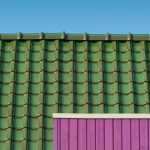When you're testing fabric for waterproofing effectiveness, you'll want to start with a few simple methods that can reveal a lot about the material's performance. Techniques like the water bead test, spray test, and submersion test each offer unique insights into how well the fabric resists moisture. You'll observe how water interacts with the surface, but it doesn't stop there. Understanding the nuances of these tests can make a significant difference in your evaluation, especially when considering the fabric's long-term durability. What you'll discover next might just change your approach to selecting waterproof materials.
Table of Contents
Key Takeaways
- Conduct the Water Bead Test to observe how water interacts with the fabric surface and assess beading versus soaking behavior.
- Use the Spray Test to evenly apply water and evaluate the fabric's waterproofing by observing water behavior after spraying.
- Perform the Submersion Test by fully immersing the fabric for 30 minutes to check for any signs of water penetration or damage.
- Document your findings, noting whether fabric remains dry, damp, or wet after each test for accurate comparison.
Understanding Waterproof Ratings
When testing fabric for waterproofing, understanding waterproof ratings is crucial to determine how well the material can resist water. These ratings typically measure the water column height, expressing the fabric's ability to withstand water pressure. You'll often see ratings like 1,500mm, 5,000mm, or even higher. The higher the number, the more water pressure the fabric can endure before it begins to leak.
It's essential to know that these ratings can vary based on the specific use. For everyday rain jackets, a rating of 3,000mm might suffice, while outdoor gear designed for extreme conditions may require ratings of 10,000mm or more.
Additionally, the type of fabric plays a significant role in its waterproofing effectiveness. Some materials are inherently more resistant than others, and treatments like coatings can enhance this feature.
As you assess different fabrics, consider their waterproof ratings alongside other factors like breathability and durability. A fabric may have a high waterproof rating but could compromise comfort or longevity.
The Water Bead Test
To perform the Water Bead Test, you'll need a few simple materials.
We'll walk you through the step-by-step procedure, so you can easily conduct the test yourself.
Materials Needed for Testing
Gather a few simple materials, including a dropper, water, and a piece of the fabric you want to test, to get started with the Water Bead Test.
You'll also need a flat surface, like a table or countertop, to conduct the test effectively. Make sure the surface is clean and free from any debris that could affect your results.
For accurate results, consider using a stopwatch or timer to measure how long it takes the water to bead up or soak into the fabric. A ruler might also be handy if you want to measure the size of the water droplets.
Additionally, having a towel or cloth nearby can help you clean up any spills during the testing process.
It's important to ensure that the fabric sample is representative of the material you'll be using. You might want to cut a piece that's at least 4 inches by 4 inches to provide enough surface area for testing.
Lastly, keep a notebook or your phone handy to jot down your observations, so you can compare the waterproofing effectiveness of different fabrics later.
Step-by-Step Procedure
Begin by placing your fabric sample flat on the clean surface, ensuring it's fully smooth and free from wrinkles. You'll want to use a small amount of water for this test, so grab a spray bottle or a dropper. If you're using a spray bottle, set it to the finest mist setting.
Next, gently spritz or drop water onto the fabric's surface. Focus on a small area to observe how the water interacts with the material. Watch closely as the water hits the fabric. You're looking for how the water behaves: does it form beads and roll off, or does it soak in?
After applying the water, allow it to sit for a minute. This waiting period gives you a clearer picture of the fabric's waterproofing capabilities. If the water beads up and rolls off, your fabric is likely doing its job well. If the water penetrates the fabric or leaves a wet spot, it may not be as waterproof as you'd like.
Remember to document your observations; this will help you compare different samples later on.
Interpreting the Results
After observing how the water interacts with your fabric, you can interpret the results to determine its waterproofing effectiveness.
Look closely at how the water beads up on the surface. If the droplets form nice, round beads and roll off easily, your fabric likely has good waterproofing properties. This indicates that the fabric repels water effectively.
On the other hand, if the water soaks into the fabric or flattens out without beading, it suggests that the material isn't waterproof. You might notice some areas where the water beads while others absorb it—this inconsistency points to varying levels of waterproofing across the fabric.
Don't forget to consider the duration of the test. If the fabric initially beads but starts to absorb water over time, it may indicate a temporary water-resistant treatment that could wear off with use.
The Spray Test
To perform the spray test, you'll first need to prepare your fabric sample properly.
Once you've got that ready, you'll apply a water spray to see how well it repels moisture.
Preparing the Fabric Sample
Start by selecting a clean, dry fabric sample that you want to test for waterproofing. This step is crucial, as any dirt or moisture can skew your results. You'll want a piece that's representative of the material you plan to use, so choose wisely.
Next, prepare your sample by ensuring it's flat and free of wrinkles. This helps the water spray contact the fabric evenly. You want to make sure your test is as accurate as possible, so pay attention to the details!
Here are three essential things to keep in mind while preparing your fabric sample:
- Fabric Type: Different materials behave differently under water exposure. Choose one that matches your intended use.
- Size of the Sample: A larger sample allows for more thorough testing, but even a smaller piece can provide valuable insights.
- Initial Condition: Make sure the sample is completely dry. Any residual moisture will affect your test results and lead to disappointment.
Applying the Water Spray
When you're ready to test, hold your spray nozzle about 12 inches away from the fabric sample to ensure an even application of water.
Start by aiming the nozzle at one edge of the fabric and begin spraying in a steady, sweeping motion across the entire surface. Be consistent with your speed and pressure to mimic real-world conditions where water exposure may vary.
Make sure to cover the entire sample thoroughly, allowing the water to hit the fabric evenly. This helps in accurately assessing the waterproofing effectiveness. If possible, use a timer to spray for a specific duration, like 30 seconds, to maintain consistency across different tests.
Be mindful of the wind; if it's breezy, try to shield the fabric from stray droplets that could interfere with your results.
After applying the spray, you can set the sample aside to let it absorb any water that might've penetrated. Remember, the goal here is to replicate the conditions the fabric would face in actual use, so avoid rushing the application.
Once you've completed this step, you're ready to move on to evaluating the performance of the fabric.
Observing the Results
After spraying the fabric, observe how the water behaves on the surface to gauge its waterproofing effectiveness. You'll want to look for key indicators that reveal how well the fabric withstands moisture. Watch closely as the droplets either bead up or soak into the material.
Here's what to note:
- Beading: If the water forms distinct beads that roll off, this indicates strong waterproofing. It's like a shield protecting your fabric from the elements!
- Soaking: If the water quickly absorbs into the fabric, it's a sign that the waterproofing treatment isn't effective. Imagine how disappointing it would be to wear a soaked jacket during a downpour!
- Staining: Look for any discoloration or stains where the water pooled. This can signify that the fabric isn't just losing its waterproof properties, but also its aesthetic appeal.
The Submersion Test
The submersion test involves fully immersing a fabric sample in water to assess its waterproofing capabilities. You'll want to prepare a sample piece, ideally measuring around 12 inches by 12 inches. Once you have your sample, fill a container with water deep enough to completely submerge the fabric.
Next, place the fabric in the water, ensuring it's entirely covered for a specific period, typically 30 minutes. After the time is up, remove the fabric and examine it closely. Look for any signs of water penetration, which indicates the fabric's waterproofing effectiveness.
Here's a simple table to help you track your observations:
| Observation | Notes |
|---|---|
| Water Penetration | Yes / No |
| Time of Submersion | 30 minutes |
| Fabric Condition | Dry / Damp / Wet |
| Additional Remarks | Any visible damage or changes |
This method gives you a clear idea of how well the fabric performs under pressure. Remember, the results can vary based on the fabric type, so consider testing multiple samples for a comprehensive evaluation.
Evaluating Durability Over Time
Evaluating a fabric's durability over time is crucial for understanding its long-term waterproofing performance. You need to consider how well the material holds up against wear and tear, exposure to the elements, and regular use. If a fabric can't withstand these conditions, its waterproof qualities may diminish quickly, leaving you vulnerable to moisture.
Here are three essential factors to keep in mind when assessing durability:
- Abrasion Resistance: Fabrics that easily fray or wear down can compromise waterproofing, making them less reliable during outdoor activities.
- UV Stability: Sunlight can degrade some materials, leading to a loss of waterproof capabilities. Look for fabrics that resist UV damage to ensure longevity.
- Water Repellency After Washing: Frequent washing can affect a fabric's ability to repel water. Understanding how many washes a fabric can endure while maintaining its waterproofing helps you gauge its overall durability.
Tips for Maintaining Waterproofing
To keep your fabric's waterproofing intact, regularly inspect and clean it according to the manufacturer's guidelines. Start by checking for any signs of wear, such as frayed seams or faded areas, which can compromise its effectiveness. If you notice any damage, consider repairing it promptly to prevent further issues.
When cleaning, avoid using harsh detergents or fabric softeners, as they can strip away waterproofing treatments. Instead, use a gentle soap and follow the recommended washing instructions. After washing, air-dry the fabric rather than using a dryer, since heat can also affect the waterproof barrier.
It's wise to reapply waterproofing treatments periodically, especially if you use the fabric frequently. Look for sprays or washes designed specifically for your type of fabric. Always test a small area first to ensure compatibility.
Frequently Asked Questions
Can I Waterproof Fabric at Home Using DIY Methods?
Yes, you can waterproof fabric at home using DIY methods. You'll find various sprays, waxes, or treatments that can effectively enhance water resistance. Just follow the instructions carefully to ensure the best results for your fabric.
What Types of Fabrics Are Naturally More Waterproof?
Some fabrics, like nylon, polyester, and Gore-Tex, are naturally more waterproof due to their tight weaves and water-repellent treatments. You'll find these materials ideal for outdoor gear and active wear, providing excellent protection against moisture.
How Do Environmental Conditions Affect Fabric Waterproofing?
Environmental conditions like humidity, temperature, and exposure to UV light can significantly affect fabric waterproofing. You'll notice that high humidity may reduce breathability, while UV exposure can degrade waterproof coatings over time, compromising effectiveness.
Is There a Difference Between Water-Resistant and Waterproof Fabric?
Yes, there's a difference. Water-resistant fabric repels water to some extent but can still absorb it, while waterproof fabric completely blocks water penetration. So, if you need full protection, go for waterproof options.
How Often Should I Retest Waterproofing on My Fabric?
You should retest your fabric's waterproofing at least once a year, or more frequently if it's exposed to harsh conditions. Regular checks help ensure it performs well when you need it most.
- How Does Ring Spun Cotton Affect Garment Fit and Shape Retention? - August 13, 2024
- What Are the Challenges in Producing Ring Spun Cotton? - August 13, 2024
- Is Ring Spun Cotton Suitable for Plus-Size Clothing? - August 13, 2024





